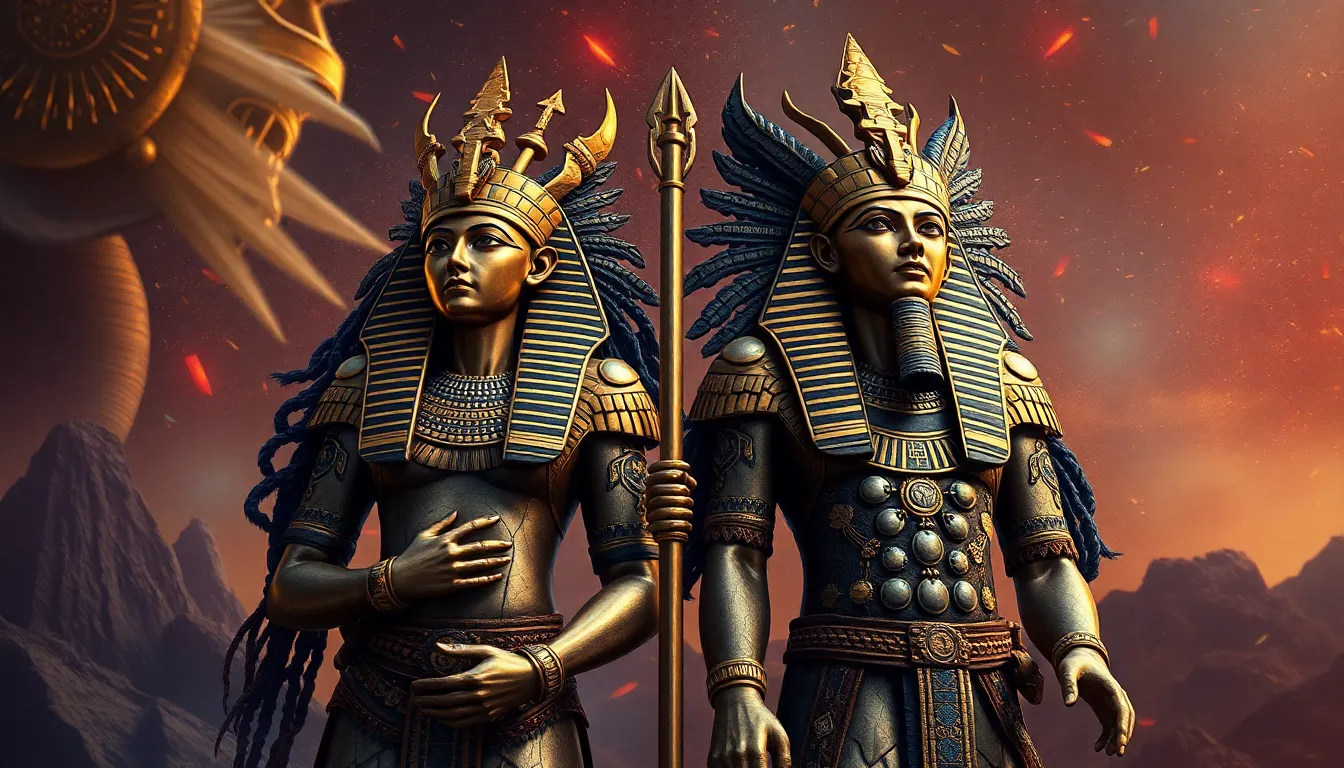Isis and Osiris: The Legendary Origins of Life and Death
I. Introduction
In the rich tapestry of Egyptian mythology, few stories resonate as deeply as that of Isis and Osiris. Their narrative intertwines themes of life, death, and resurrection, embodying the ancient Egyptians’ beliefs about the afterlife and the cyclical nature of existence. This article delves into the importance of their story, exploring its significance within the context of ancient Egyptian culture and its lasting legacy in modern interpretations.
II. The Deities of Ancient Egypt
Isis and Osiris are among the most venerated deities in ancient Egyptian mythology, each representing fundamental aspects of existence.
A. Brief introduction to Isis and Osiris
Isis, known as the ideal mother and wife, is revered as a goddess of magic, fertility, and motherhood. Osiris, her husband, symbolizes the afterlife, resurrection, and the agricultural cycle.
B. Roles and attributes of Isis: goddess of magic, motherhood, and fertility
- Protector of the downtrodden and the sick
- Goddess of fertility and childbirth
- Master of magical arts and healing
C. Roles and attributes of Osiris: god of the afterlife, resurrection, and agriculture
- Ruler of the underworld
- Symbol of rebirth and renewal
- Patron of agriculture, particularly grain crops
III. The Myth of Osiris
The myth of Osiris begins with his rise to kingship over Egypt, establishing a prosperous and fertile land along the Nile.
A. The origin story of Osiris: kingship and the Nile
Osiris was seen as a benevolent ruler who taught the Egyptians agriculture and how to cultivate the land. His reign brought abundance, and he was celebrated as a god of fertility.
B. The betrayal by Set: Osiris’s murder and dismemberment
However, this golden age was shattered by Set, the god of chaos and disorder, who was envious of Osiris’s power. In a cunning plot, Set murdered Osiris and dismembered his body, scattering the pieces throughout Egypt.
C. The significance of his death in Egyptian culture
The death of Osiris was not merely a tragic event; it was a profound symbol of the struggles between order and chaos, life and death. His dismemberment represented the fragility of life and the inevitability of death, themes central to Egyptian beliefs.
IV. The Resurrection of Osiris
Isis, devastated by the loss of her husband, embarked on a perilous quest to find and restore him.
A. Isis’s quest to find and restore Osiris
Using her magical abilities, Isis searched tirelessly for the pieces of Osiris’s body. After collecting all but one piece, she was determined to bring him back to life.
B. The ritual of resurrection and its implications for life after death
With the help of her sister Nephthys, Isis performed a sacred ritual that not only resurrected Osiris but also established the foundation of Egyptian beliefs regarding the afterlife. This act symbolized hope and the promise of life beyond death.
C. Symbolism of the ankh and its connection to Osiris
The ankh, often associated with Osiris, represents eternal life. It serves as a potent symbol of the belief in resurrection and the continuation of life after death, further solidifying Osiris’s role as a god of the afterlife.
V. The Legacy of Isis and Osiris
The myth of Isis and Osiris profoundly impacted ancient Egyptian religion and society.
A. The impact of their myth on ancient Egyptian religion and society
The story of Isis and Osiris influenced numerous religious practices, including the rituals surrounding death and burial. Their narrative provided a framework for understanding the afterlife.
B. The cult of Osiris and the practices surrounding death and burial
- Osiris’s resurrection became central to funerary rites.
- Temples dedicated to Osiris were built, where followers would perform rituals to ensure a good afterlife.
C. Influence on later religions and mythologies
The themes present in the myth of Isis and Osiris can be traced throughout various cultures, influencing later religions such as Christianity and other mythologies that emphasize resurrection and rebirth.
VI. Themes of Life and Death in the Myth
The myth of Isis and Osiris encapsulates profound themes that resonate through time.
A. The cyclical nature of life, death, and rebirth
The narrative illustrates the cyclical nature of existence, where death leads to rebirth, reflecting the agricultural seasons in Egypt.
B. The representation of fertility and agriculture through Osiris
Osiris’s association with agriculture underscores the importance of fertility, not only in the physical sense but also in the spiritual realm.
C. The role of Isis as a protector and nurturer
Isis embodies the nurturing aspect of life, representing the protective and caring qualities of motherhood, which are vital in the cycle of life.
VII. Modern Interpretations and Cultural Impact
Today, the myth of Isis and Osiris continues to captivate audiences and scholars alike.
A. How the myth of Isis and Osiris is viewed today
Modern interpretations often focus on the themes of love, sacrifice, and the enduring nature of life and death. Scholars analyze these themes through various lenses, including feminist perspectives on Isis’s role.
B. Representation in art, literature, and popular culture
- The myth has inspired countless works of art, from ancient sculptures to contemporary literature.
- Films and novels often draw on the themes of resurrection and the struggle between good and evil reflected in their story.
C. The relevance of their story in contemporary discussions of life, death, and spirituality
Isis and Osiris’s narrative invites contemplation on mortality, spirituality, and the human experience, making it relevant in discussions about life and death in modern times.
VIII. Conclusion
The enduring legacy of Isis and Osiris serves as a testament to the depth and complexity of ancient Egyptian mythology. Their story not only provides insight into the beliefs and practices of a civilization long past but also resonates with fundamental questions about existence that remain relevant today.
As we explore the rich narratives of ancient Egypt, we find a wealth of knowledge and wisdom that can deepen our understanding of life, death, and the mysteries that connect us all.




